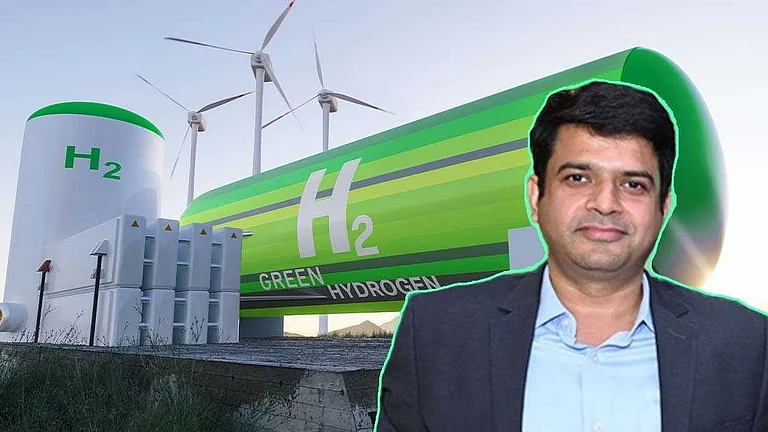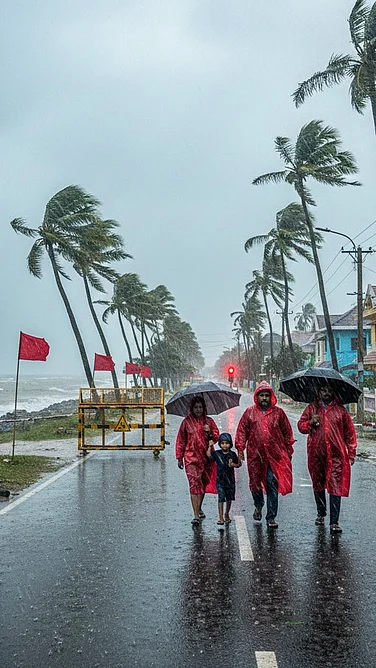When the state of Assam abruptly suspended its Green Hydrogen Policy in July—barely five months after its launch—it did more than just make local headlines. It rattled investor confidence, muddled the messaging around India's clean energy ambitions, and, in doing so, underlined a broader pattern of hesitancy creeping into the country’s hydrogen transition.
The Solar Energy Corporation of India (SECI), too, withdrew its call for proposals for large-scale hydrogen hubs under the National Green Hydrogen Mission (NGHM) around the same time. The hubs, each envisioned to produce 100,000 tonnes annually, had been cast as anchors in the government’s flagship green hydrogen strategy. Their quiet exit spoke volumes.
Together, these reversals appeared less like isolated stumbles and more like a strategic pause—one born not of recalibration, but of mounting uncertainty. More worryingly, they also pointed to a deeper misalignment between central and state-level policymaking.
While the NGHM sets the tone for national ambitions, actual implementation hinges on state governments, who control levers such as land access, local incentives, and permitting regimes. “The centre is talking about scale and speed, but the states are on very different timelines and comfort levels. Unless there’s tighter coordination, we will see more slowdowns,” said Parthiban Selvaraj Head - Business Development, BGR Tech (Oil & Gas processing and Hydrogen Generation).
Grand Designs, Weak Delivery
Green hydrogen—produced via the electrolysis of water using renewable electricity—has long been pitched as a crucial enabler of decarbonisation, particularly for hard-to-abate sectors such as steel, fertilisers, refining, and long-haul transport. India, which currently consumes around 6 million tonnes of hydrogen annually—most of it “grey” and derived from fossil fuels—aspires to lead the shift toward “green.”
In January 2022, the Union Cabinet approved the NGHM, setting a production target of 5 million tonnes of green hydrogen by 2030. Yet more than halfway through that timeline, just 0.9 million tonnes has been auctioned. Worse, even this modest start is weighed down by a lack of assured offtake. “Things are not progressing the way we had hoped,” said Manideep Gudela, an energy policy researcher at the Centre for Energy, Environment & People (CEEP). “With just five years left until the 2030 deadline, it's becoming increasingly difficult to stay on track. Given the current pace, India can only achieve about 30% of the target by 2030.”
India’s earlier push for renewable energy was propelled by demand-side instruments such as Renewable Purchase Obligations. Green hydrogen, in contrast, is still waiting for similar levers. “We haven't yet introduced mechanisms to stimulate demand,” Gudela added.
A Pipeline with Few Deliveries
India’s hydrogen demand is expected to climb to 8.8 million tonnes per annum (MTPA) by 2032, up from 5–6 MTPA in 2023, according to the India Energy Storage Alliance (IESA).
On paper, the supply side appears energetic. Over 9.2 MTPA of green hydrogen capacity has been announced, and several states have signed hefty memoranda of understanding (MoUs). Maharashtra inked Rs 2.76 lakh crore worth of MoUs in January 2024, covering 910 kilotonnes per annum with firms like NTPC Green Energy, Avaada, ReNew eFuels, and L&T Green Energy. Odisha followed suit in early 2025, partnering with Sembcorp to explore a 720,000-tonne facility.
And yet, not one of these projects has advanced to the Final Investment Decision (FID) stage. “Earlier we anticipated that financial investment decisions would close within three to five years. Now, that timeline has almost doubled, with closures taking six to seven years or even more in some cases,” Gudela noted.
The Triple Bottleneck: Cost, Clarity, and Capability
India’s hydrogen ambitions are being held hostage by a trifecta of unresolved challenges: an unfavourable cost gap, a lack of policy certainty, and technological shortcomings.
Green hydrogen currently costs about $3 to $4 per kilogram—roughly double the cost of grey hydrogen. Green ammonia, similarly, is priced close to $900 per tonne, versus $450 for its grey counterpart. That arithmetic alone makes developers skittish. “Unless there's a green premium built into the value chain—where the end user is willing to pay more for a product made using green hydrogen—this cost differential becomes hard to justify,” said Anish Mandal, Partner, Deloitte India.
Speaking at IISc Bangalore last week, the Union Minister for New and Renewable Energy, Pralhad Joshi struck a candid note: “It is very urgent to reduce the current cost of green hydrogen from Rs 300–400 per kg to Rs 100.” He added, “True progress comes not from subsidies, but from science.”
But even science needs policy ballast. At present, India lacks mandates requiring industries to blend or procure green hydrogen—leaving investors with few demand anchors. “There have been very few long-term offtake agreements from buyers,” Gudela noted.
Meanwhile, the backbone of green hydrogen production—electrolysers—is in short domestic supply. “India currently relies heavily on imports, particularly from China and Europe, for advanced PEM and alkaline electrolysers,” said ParthibanSelvaraj of BGR Tech. According to IESA’s 2024 Market Outlook, India currently imports over 85% of its electrolyser systems, primarily from China and Europe.
Despite the government’s Production-Linked Incentive (PLI) schemes, India’s electrolyser manufacturing base remains nascent. “Some groundwork is being laid, but nothing substantial has emerged so far,” Gudela conceded. Delays in land acquisition, grid integration, and permitting have added more friction to already complex projects.
The View from Abroad
India’s faltering momentum comes at a time when global rivals are racing ahead. The European Union, for instance, has earmarked 40 GW of electrolyser capacity by 2030 as part of its Green Deal strategy. Carbon pricing mechanisms in the EU—ranging from $40 to over $100 per tonne—make the switch to green hydrogen financially viable. “That significantly alters the economics in favour of green hydrogen,” said Mandal of Deloitte.
Australia’s Asian Renewable Energy Hub, Japan’s multi-country sourcing plans, and the US’s Inflation Reduction Act all include substantial green hydrogen incentives. In comparison, India’s financial sweeteners look modest. “Compared to some of the developed countries, India currently offers lower financial incentives. That’s a challenge,” said Prashant Vasisht, Senior Vice President at ICRA. “Some projects may get diverted elsewhere due to more attractive incentives.”
A Roadmap or a Detour?
The outlines of a fix are visible. NITI Aayog, in its 2022 report Harnessing Green Hydrogen Opportunities for Deep Decarbonisation in India, called for a national roadmap to harmonise fragmented policies and timelines. It proposed scaling electrolyser manufacturing to 25 GW by 2030 and investing $1 billion in R&D across the hydrogen value chain.
India’s green hydrogen mission is not without promise. It has abundant solar and wind resources, a growing industrial base, and a demonstrated capacity to scale clean energy technologies. But promise alone will not drive investment, reduce costs, or create demand.
What is missing is not ambition, but alignment—between centre and state, between supply and offtake, and between targets and timelines. Without urgent course correction, the National Green Hydrogen Mission risks becoming another well-meaning policy weighed down by bureaucratic drift, market hesitation, and underfunded infrastructure.
In the global hydrogen race, where leadership is shaped by early bets and bold execution, India cannot afford to hover in a holding pattern. The clock is ticking—and without lift-off soon, its hydrogen dreams may remain just that.



































